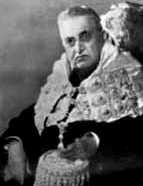

JMR did not shy away from controversy. Nor did he renounce his “sacred right of defence” (A Faculdade de Theologia [...], 1886, p. 9) or dispense with “being the last to speak”, knowing that this could be the “definitive criterion of victory” (“Episódios da «Questão da Sebenta»“, 1934, p. 9). In Coimbra, in 1882-1883, he dared to engage in a verbal duel with Camilo, who (counterattacking Dr. Avelino César Calisto for the remarks that his Sebenta de Direito Eclesiástico Português [Portuguese Ecclesiastical Law Textbook] addressed to the Perfil do Marquês de Pombal [Profile of the Marquis of Pombal]) had questioned the notion of papal infallibility. Newly qualified as a doctor in 1889, he persevered in his challenge in A Faculdade de Theologia e As Doutrinas que Ella Ensina: além d’ A Sagrada Congregação do Concílio [The School of Theology and the Doctrines it Teaches: beyond the Sacred Congregation of the Council] (a work condemned by the Roman Holy Office), and published A Verdade [The Truth]. This was a periodical publication of which he was the sole editor and which, in its two short-lived issues, attacked the alleged interference of the Bishop-Count, D. Manuel de Bastos Pina, in the Academy. JMR argued that this supervision was the responsibility of the State.
After decades of relative peace, his combative streak resurfaced (mere coincidence?) with his retirement. It is likely that it was on the author’s initiative that the investigation reports requested by the Most Reverend Dr. José Maria Rodrigues were published. (1928) – a twenty-two-page pamphlet clearing the stain spread by António Cabreira, who had raised suspicions in the newspaper Os Ridículos that “a certain priest, well known for his erudition and very solemn demeanour” (p. 4), was a Freemason. Almost Quierosian – almost another episode in romantic life – the case reveals the contradictory nature of a society that so quickly displays tensions but, in the face of the Church or a disciplinary authority, regains the appearance of harmony. In fact, everything is cleared up with retractions: it was a misunderstanding, in the aftermath of debates about the Miracle of Ourique; it was the remnants of “academic quarrels that caused a certain bitterness” (Autos..., p. 13).
This work is financed by national funds through FCT - Foundation for Science and Technology, I.P, in the scope of the projects UIDB/04311/2020 and UIDP/04311/2020.
